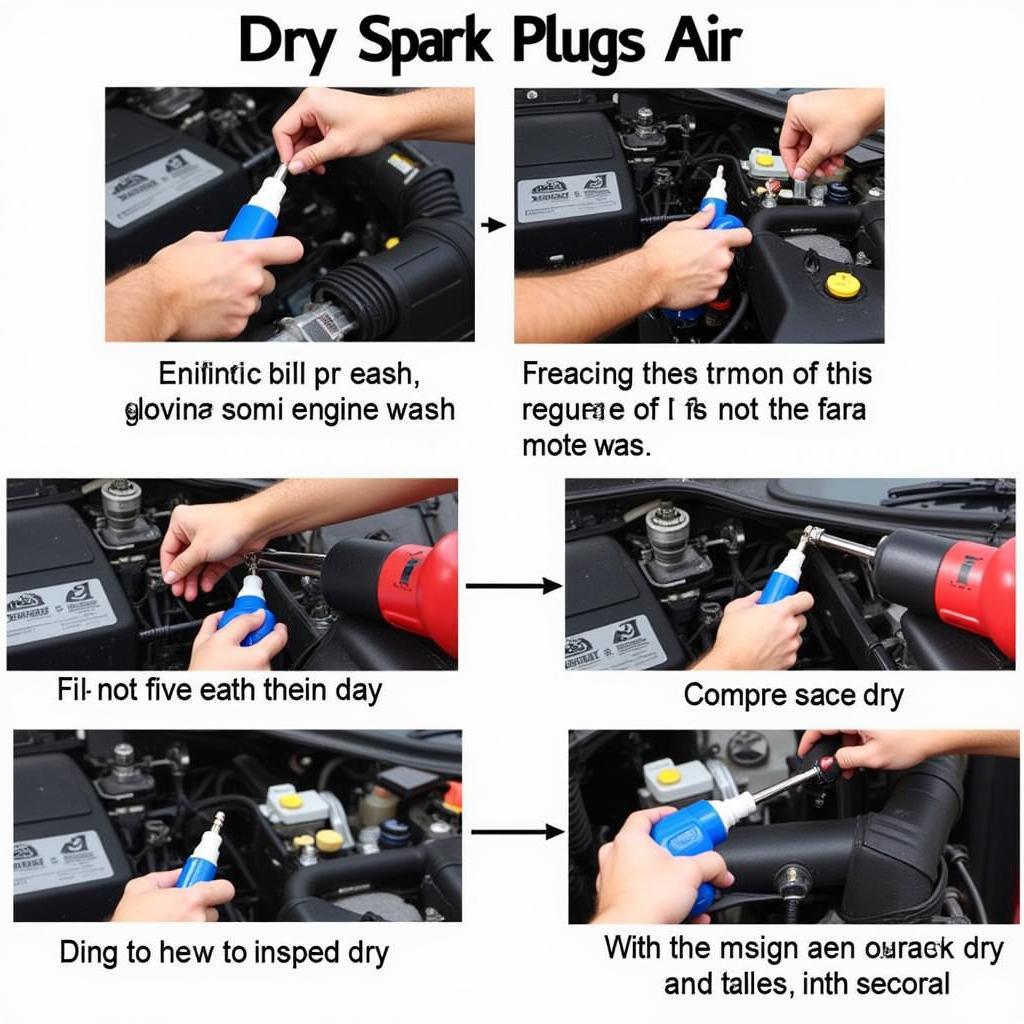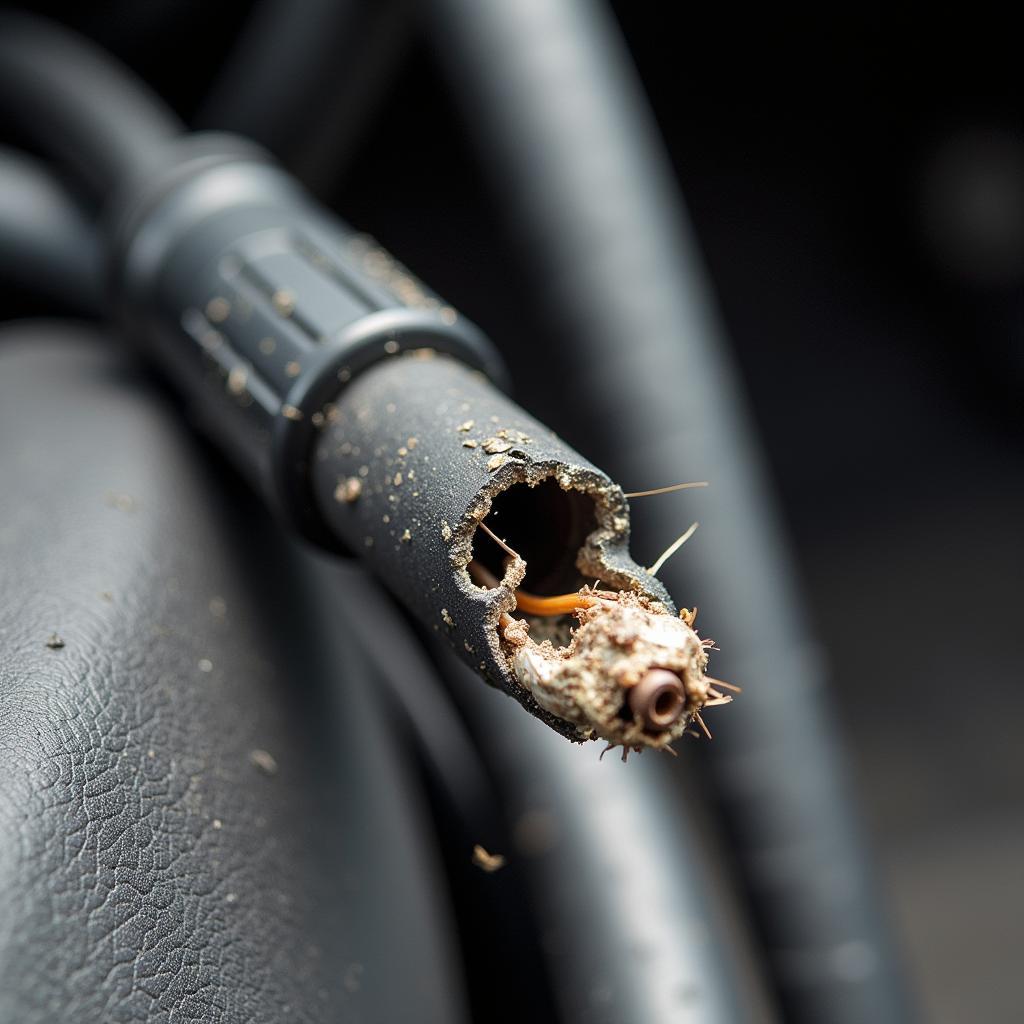Washing your car engine can seem like a good idea to keep things clean and shiny. However, if not done correctly, it can lead to a variety of Problems After Washing Car Engine, ranging from minor inconveniences to significant mechanical issues. This article will explore common problems that can arise after washing your car engine, provide troubleshooting tips, and offer preventative measures for a worry-free engine cleaning experience. For those looking for reliable used cars, check out what the best use car withoit a lot of problems.
Common Problems After Washing Car Engine
Several issues can crop up after an engine wash, often stemming from water intrusion into sensitive electrical components or improper cleaning techniques. These include:
- Starting problems: Water can interfere with spark plugs, ignition coils, and other electrical connections, making it difficult or impossible to start your vehicle.
- Rough idling: A sputtering or uneven idle can indicate water in the intake system or affecting sensor readings.
- Stalling: Water in the fuel system can cause the engine to stall unexpectedly, posing a safety hazard.
- Electrical malfunctions: Malfunctioning dashboard lights, power windows, or other electrical accessories can be caused by water damage to wiring or control modules.
- Sensor issues: Water can damage various sensors, including the mass airflow sensor (MAF), oxygen sensors, and crankshaft position sensor, leading to inaccurate readings and poor engine performance.
After a thorough engine cleaning, some drivers experience car chassis problems. While seemingly unrelated, these issues can sometimes be indirectly linked to the cleaning process if it involves disturbing undercarriage components.
You might be surprised to hear that even seemingly simple car washes can lead to unexpected issues. For example, certain Corolla hybrid 2020 models have reported problems in a car wash, highlighting the importance of careful cleaning practices.
Troubleshooting Engine Problems After Washing
If you experience problems after washing car engine, don’t panic. Here are some steps you can take to diagnose and fix the issue:
- Inspect all electrical connections: Look for any loose or corroded connections. Disconnect them, dry them thoroughly, and reconnect them securely.
- Check for water in the air intake: Remove the air filter and check for any signs of water. If present, dry the air filter and the intake system completely.
- Inspect the distributor cap (if applicable): Older vehicles with distributor caps can be susceptible to water intrusion. Remove the cap, dry it thoroughly, and check for any damage.
 Inspecting Engine Electrical Connections After Wash
Inspecting Engine Electrical Connections After Wash
- Dry the spark plugs and ignition coils: Carefully remove the spark plugs and ignition coils, and dry them thoroughly with a clean cloth or compressed air.
 Drying Spark Plugs and Ignition Coils After Engine Wash
Drying Spark Plugs and Ignition Coils After Engine Wash
- Check the fuse box: Inspect the fuses for any signs of water damage or blown fuses. Replace any blown fuses with the correct amperage.
Preventing Problems From a Washed Car Engine
Prevention is always better than cure. Here are some preventative measures to avoid problems from pressure washed engine of car:
- Cover sensitive components: Use plastic bags or waterproof tape to cover sensitive electrical components like the alternator, distributor, and fuse box.
- Avoid high-pressure washing: While a pressure washer can be effective, excessive pressure can force water into sensitive areas. Opt for a gentle spray or a garden hose.
- Use a degreaser specifically designed for engines: These degreasers are formulated to break down grease and grime without damaging electrical components.
- Dry the engine thoroughly: After washing, use compressed air or a clean cloth to dry all components thoroughly. Pay particular attention to electrical connections and crevices where water can accumulate.
- Start the engine immediately after washing: This helps to evaporate any remaining water and prevent corrosion.
Even seemingly minor car wash incidents can cause problems. A prime example is the girl meets world car wash problem, which underscores the potential for unexpected issues to arise.
Conclusion
While a clean engine can look appealing, problems after washing car engine can be a real headache. By understanding the potential issues, following proper troubleshooting steps, and implementing preventative measures, you can ensure a safe and effective engine cleaning experience. For more assistance or personalized advice, feel free to connect with AutoTipPro at +1 (641) 206-8880 or visit our office at 500 N St Mary’s St, San Antonio, TX 78205, United States.
FAQ
- What should I do if my car won’t start after washing the engine? Inspect and dry electrical connections, spark plugs, and the air intake.
- Is it safe to pressure wash my car engine? While possible, it’s best to avoid high-pressure washing and opt for a gentle spray.
- What are the signs of water damage in my car’s electrical system? Malfunctioning lights, accessories, or starting problems can indicate water damage.
- How can I prevent water from getting into my car’s engine while washing? Cover sensitive components with plastic bags or waterproof tape.
- What type of degreaser should I use for my car engine? Use a degreaser specifically designed for engines to avoid damaging electrical components.
- How can I dry my engine thoroughly after washing? Use compressed air or a clean cloth, paying attention to electrical connections and crevices.
- Should I start my car immediately after washing the engine? Yes, starting the engine helps evaporate any remaining water and prevent corrosion.







Leave a Reply